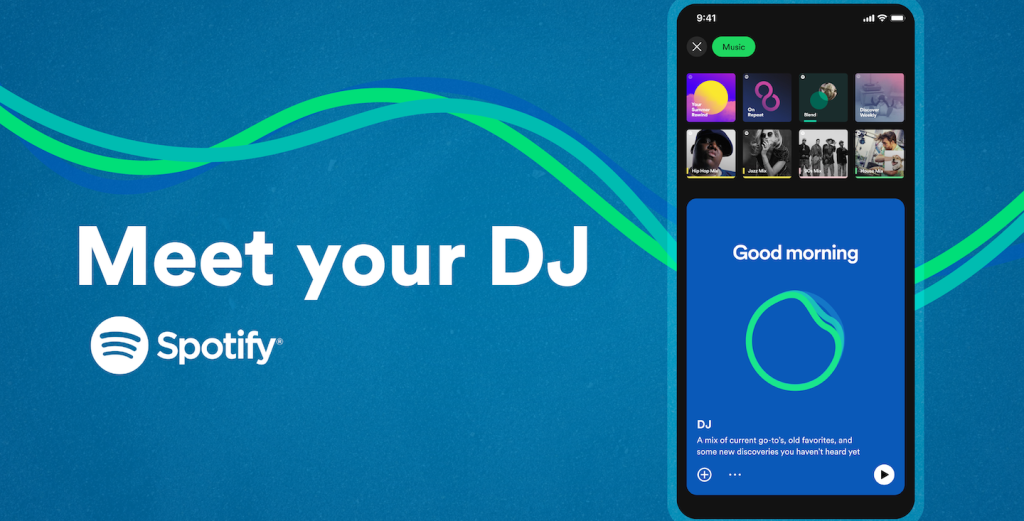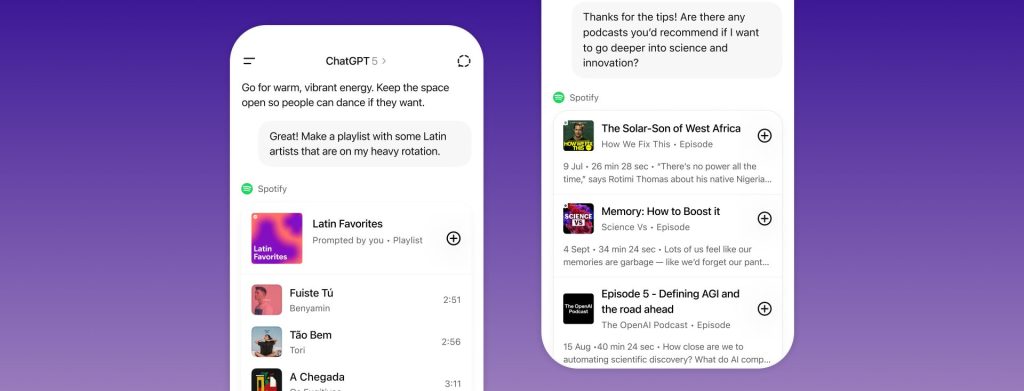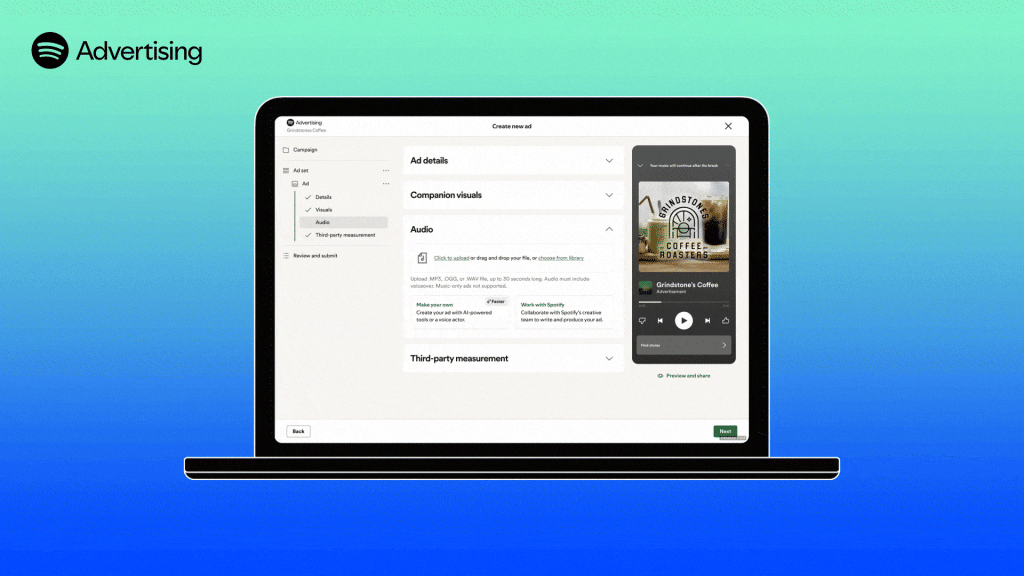If you’ve ever felt like Spotify just gets you, you’re not imagining it. The company uses artificial intelligence across the app—what you hear, how it’s presented, how creators reach you, even how the platform fights fraud. And yes, there are receipts.
AI DJ (a.k.a. “DJ X”). Spotify’s AI DJ introduced a new listening flow: it picks music and talks to you in a natural voice modeled after Spotify’s Xavier “X” Jernigan. Spotify described it plainly: “Generative AI through the use of OpenAI technology” powers the experience, while its editors shape the commentary.
A few weeks after launch, Spotify explained why the voice matters. As Zeena Qureshi put it, sounding human “is key for users to foster a deeper connection,” with voice traits making the DJ “emotional and highly realistic.”
The feature didn’t stall out. By August 2023, DJ expanded to 50 markets; by May 2025 it even started taking spoken requests (“you can actually talk to DJ X”). That two-way control edges the service closer to an always-on music concierge.

AI Playlists. In April 2024, Spotify launched AI Playlist in beta, letting Premium users type a prompt—“music for a foggy morning,” say—and get a personalized set. It began in the U.K. and Australia, then expanded to the U.S., Canada, Ireland, and New Zealand later that year. The Verge called it a tool that builds tracklists “based on text descriptions.”
Together, DJ and AI Playlist are the new “front door” for discovery. They sit on top of the same recommendation engine that’s been learning your taste for years, but now they talk.
A new twist: Spotify inside ChatGPT

As of October 2025, you can bring Spotify straight into a ChatGPT conversation. Spotify’s newsroom preview spells it out: start a chat, mention Spotify, connect your account, then ask for songs, artists, albums, playlists, or podcast episodes—right there in the chat. Tap a track, and it opens in Spotify.
OpenAI announced the broader framework the same day—third-party apps in ChatGPT, with Spotify among the first wave. Tech outlets confirmed the practical bits: ChatGPT can create playlists and make personalized music picks once you link your account.
In short: conversational discovery isn’t just inside Spotify anymore. It now meets you where you already chat.
Under the hood: how personalization really works
Spotify has said the quiet part out loud for years: “Machine learning is what drives personalization on Spotify.” They even described it like this: one platform, “381 million individual versions of Spotify,” each filled with different home pages and recommendations. The company processes “nearly half a trillion events” a day to inform those choices.
That scale needs algorithms that explore and learn, not just repeat your favorites. Spotify’s research and engineering posts discuss bandit approaches (systems that balance “explore” vs. “exploit”) and even reinforcement learning designed to optimize long-term satisfaction, not just a quick click. In their words, RL should avoid the “empty calories” of short-term engagement.
If we boil it down: the DJ voice is the friendly narrator, AI Playlists are the prompts, and underneath them lives a huge recommendation stack trained on behavior, context, and feedback. That stack is very much AI.
Spoken word, many languages
Podcasts are where you can hear AI in action in a different way. In September 2023, Spotify piloted AI voice translation for top shows—translating episodes while keeping the host’s voice. The company said it leverages OpenAI’s voice generation tech “to match the original speaker’s style,” which makes the experience feel authentic. Ziad Sultan, Spotify’s VP of Personalization, said it “gives listeners… the power to discover… in a more authentic way.”
Accessibility also got a lift. Spotify began rolling out auto-generated podcast transcripts, and later gave creators the ability to upload or edit them. It sounds small, but it changes discovery and comprehension for millions.
And if you prefer Spanish, Spotify even introduced a Spanish-language AI DJ, “Livi,” reflecting how big Latin music has become on the platform.
Ads that write and read themselves

On the business side, Spotify’s ad platform quietly went from helpful to clever. In April 2025, the company announced Gen-AI tools inside Spotify Ads Manager that generate scripts and voiceovers for audio ads at no extra cost (with U.S./Canada first, and the U.K. next). Spotify also launched a new ad exchange and updated measurement stacks that rely on automated, data-driven systems.
Spotify’s own materials describe it simply: an AI-powered script and voiceover generator where you provide a prompt, select a voice, and mix background music to produce an ad in minutes. It’s built for speed, scale, and smaller teams that don’t have an agency bench.
If you’re wondering whether this is just a toy, industry coverage underscores the point: Spotify introduced the ad exchange (SAX), offered the AI ad creator for free, and hooked into major programmatic pipes like DV360 and The Trade Desk. That’s not a side project. It’s core ad tech strategy.
Guardrails: spam, deepfakes, and clearer labels
Here’s the messy part. Generative tools made it easy for bad actors to flood streaming services with low-quality “songs,” fake artist pages, or ultra-short tracks designed to siphon royalties. Spotify’s response has accelerated.
In late September 2025, Spotify said it removed 75 million spam tracks in a year, introduced a music spam filter, and would support an industry metadata standard (DDEX) so labels and partners can disclose how AI was used in a track—and show it in credits. Reporting from The Guardian, Music Business Worldwide, and Spotify’s own newsroom align on those points.
This builds on earlier actions. Back in 2023, Spotify ejected tens of thousands of Boomy uploads tied to suspected artificial streaming. The policy principle was clear even then: if the stream isn’t real, the payout isn’t either.
Will the filters catch everything? No system is perfect, and scams keep evolving. But the direction is unambiguous: more detection, clearer credits, fewer fake plays, and tougher rules for impersonation and deepfake vocals.
So… is Spotify using AI?
Yes—everywhere it needs to. Spotify’s own engineering blog is direct about it: “Machine learning is what drives personalization.” The DJ’s commentary uses OpenAI tech, the AI playlist builder turns free-form prompts into music, and podcast translation keeps a creator’s voice even in a different language. On the business side, the ad stack now includes generative tools that write scripts and synthesize voiceovers. On safety, the company is pushing filtration and AI-disclosure standards in credits.
That’s not a single feature—it’s a fabric.
What this means if you build or buy in the Spotify economy
For listeners: recommendations get more conversational. You can nudge DJ X with voice, spin up a mood-based list with AI Playlist, or ask ChatGPT to fetch music without leaving the chat. Discovery feels less like searching and more like asking.
For creators and publishers: translation, transcripts, and better ranking signals can expand reach—especially across languages—while stricter spam enforcement should make charts and payouts a little fairer. The flip side: metadata matters more, and transparency about AI use now follows a standard.
For brands and agencies: audio creative no longer needs a studio booking. The AI ad tools lower cost and cut lead time; that means more testing and faster iteration. It also means accountability, since the same platform is investing in measurement and automated buying.
Quick myth-busting
“Spotify makes AI music.” Not quite. Spotify hosts music and moderates the catalog. Its AI is mostly about recommendations, narration, translation, and ads—plus the policy work to keep AI-abuse in check. The 75-million-track purge shows the moderation side at full tilt.
“AI DJ means it’s all robots now.” The DJ voice is AI-generated, but it’s modeled on a real person and guided by editors. The picks come from personalization systems trained on your behavior and context.
“This is just hype.” The ad stack changes alone—AI scripts and voiceovers, a new exchange, and upgraded measurement—are hard business moves. The ChatGPT integration opens another front door for music discovery. Hype fades; these are platform choices.
If you’re a business leader eyeing this space
Treat Spotify’s AI the way you’d treat a sharp teammate: give it a well-framed job, then check the results.
For music teams, have humans create the prompt “voice” for AI Playlists and DJ talking points on campaigns. For podcast networks, consider translation pilots where the host’s tone matters as much as the words. For brands, use the AI ad creator for rapid concepts, then have a human tighten the script—the tool gets you to draft zero, your team gets you to great.
And please, keep an eye on the policy page: if your releases use AI in vocals or instrumentation, disclose it so credits stay honest. That’s where trust lives now.








